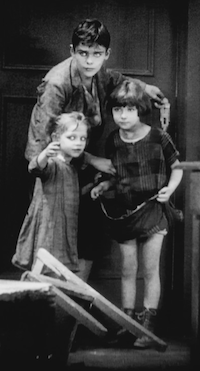 Weimar film fans have something to celebrate in 2018: the Berlin Film Festival Berlinale has just announced a whole section devoted to Weimar cinema next year, from Georg Lamprecht’s gritty proletarian drama Die Unehelichen (1926) to Friedrich Dalsheim and Gulla Pfeffer’s ethnographic documentary Menschen im Busch (1931):”The Retrospective of the 68th Berlin International Film Festival will focus on the great variety of cinema in the Weimar era. Some one hundred years ago, at the end of World War I and the dawn of the Weimar Republic, one of the most productive and influential phases in German filmmaking began unfolding, a creative era that went on to shape international perception of the country’s film culture, even to the present day. For “Weimar Cinema Revisited”, the festival will present a total of 28 programmes of narrative, documentary, and short films made between 1918 and 1933. … Most of the silent film screenings will be accompanied by music played live by internationally renowned musicians.”
Weimar film fans have something to celebrate in 2018: the Berlin Film Festival Berlinale has just announced a whole section devoted to Weimar cinema next year, from Georg Lamprecht’s gritty proletarian drama Die Unehelichen (1926) to Friedrich Dalsheim and Gulla Pfeffer’s ethnographic documentary Menschen im Busch (1931):”The Retrospective of the 68th Berlin International Film Festival will focus on the great variety of cinema in the Weimar era. Some one hundred years ago, at the end of World War I and the dawn of the Weimar Republic, one of the most productive and influential phases in German filmmaking began unfolding, a creative era that went on to shape international perception of the country’s film culture, even to the present day. For “Weimar Cinema Revisited”, the festival will present a total of 28 programmes of narrative, documentary, and short films made between 1918 and 1933. … Most of the silent film screenings will be accompanied by music played live by internationally renowned musicians.”
Welcome to the Weimar Studies Network
The Weimar Studies Network (WSN) is an international platform for researchers and academics working on the history of the Weimar Republic.
It offers information on recent publications, up-coming events and on-going research projects on the politics, culture and society of the interwar years in Germany.
The WSN is open to anybody with an interest in the history of Weimar Germany.- Architecture Art History Berlin Biography Conference Cultural History Economic History Education Exhibition Fashion Foreign Policy Gender General History History of Science History of the Everyday Intellectual History Journal Legal History Literature Media History Military History National Socialism Political History Religious Culture Resource Social History Theatre & Film Transnational History Visual Culture
Blogroll









